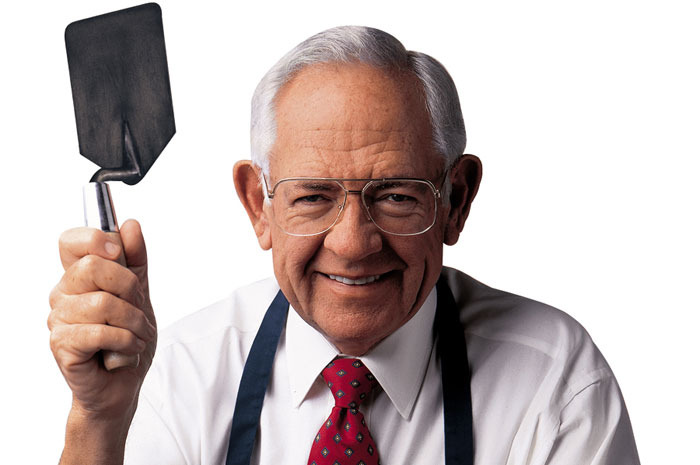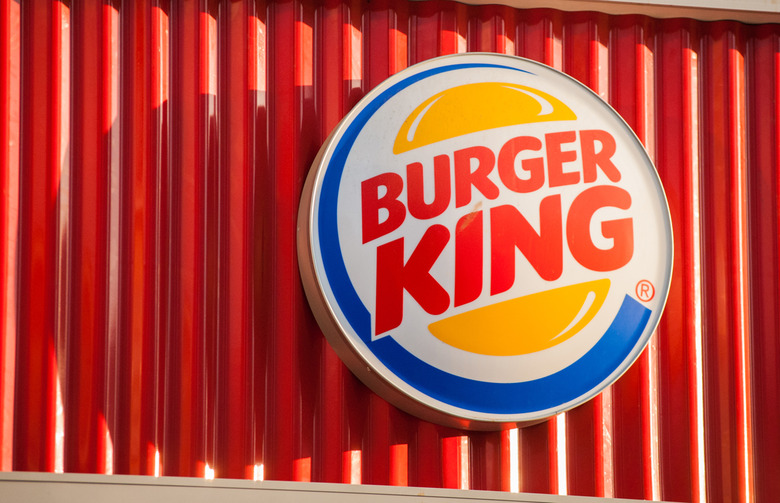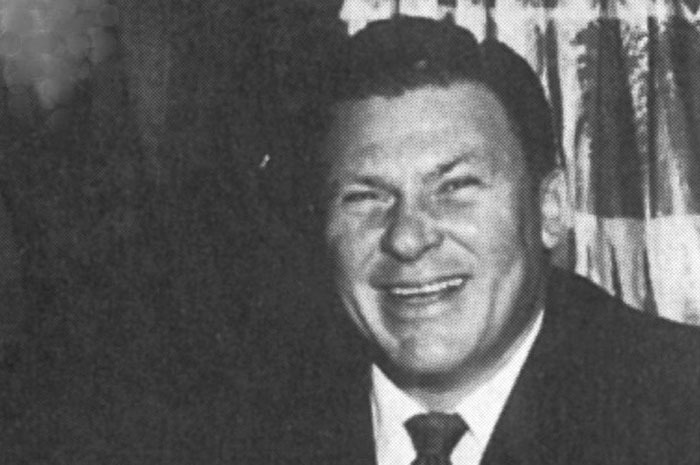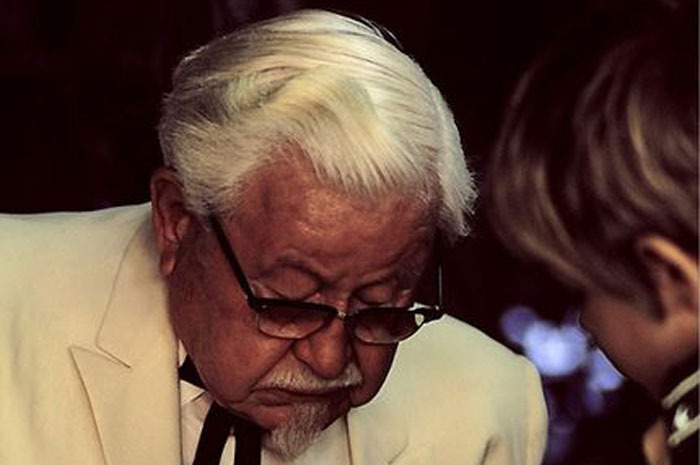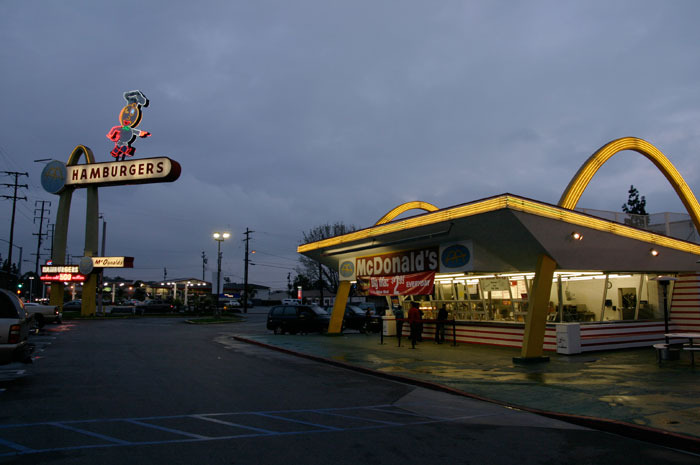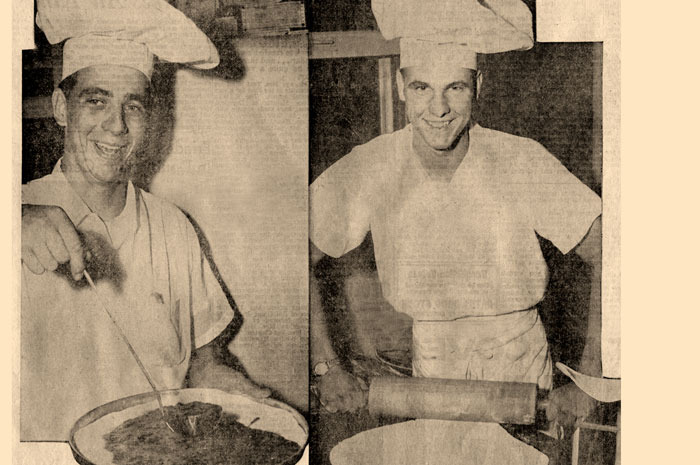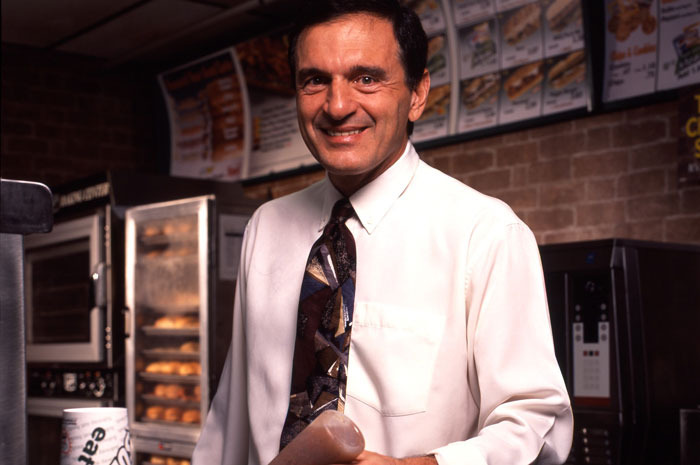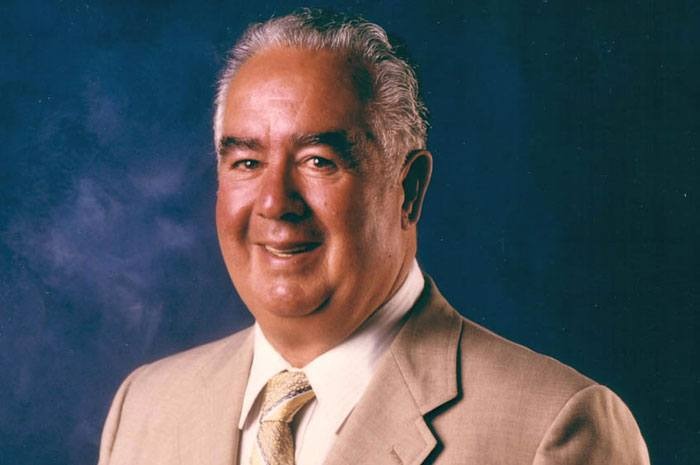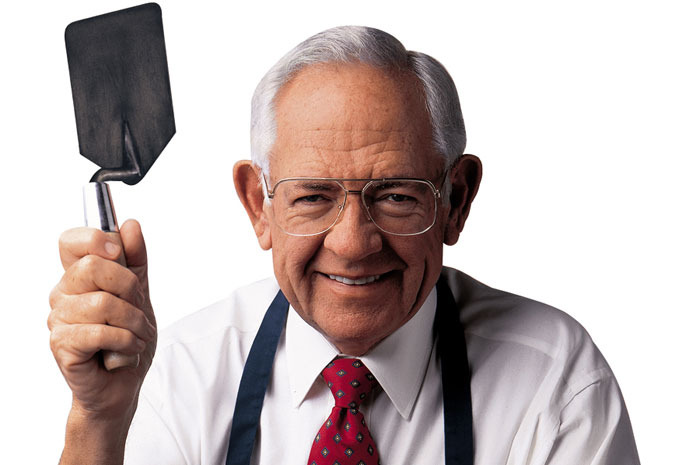Who Started America's 10 Biggest Fast Food Chains?
We tend to think of fast food chains as having arrived in the world fully formed, with their extra value meals and experimental breakfast initiatives raring and ready to go, backed by a massive board of executives. But even the world's largest companies got their start somewhere, usually with just one person (or a small group of people) and a great idea. These are the individuals responsible for unleashing the 10 biggest fast food chains upon America.
Burger King: James McLamore and David R. Edgerton
Burger King traces its roots to a burger joint called Insta-Burger King, founded in 1953 in Jacksonville, Florida, by Keith J. Kramer and his wife's uncle, Matthew Burns. The duo built a moderately successful chain thanks to special cooking devices called Insta-Broilers, but after the company failed in 1959 it was bought by its Miami franchise owners, James McLamore and David Edgerton. They restructured the company, re-named it Burger King, and expanded it to 250 locations before selling it to Pillsbury in 1967.
Chick-fil-A: S. Truett Cathy
The story of Chick fil-A began in 1946, when founder S. Truett Cathy, who passed away at age 93 in 2014, opened a restaurant in the Atlanta suburbs called Dwarf House. This business turned into a chain (with a full menu); 13 Dwarf Houses, now called Chick-fil-A Dwarf House, are still in operation in the Metro Atlanta area. Several years later, Cathy purchased a pressure fryer that he discovered could fry up a piece of chicken for a sandwich in the same amount of time it took to cook a burger, and the proverbial light bulb went off. He trademarked the name Chick-fil-A, and in 1967 his first unit, specializing in chicken sandwiches and with a menu devoid of any beef products, opened in the food court of Atlanta's Greenbriar Mall. Today the company is run by his son, Dan.
Dunkin’ Donuts: William Rosenberg
William Rosenberg opened his first restaurant in Quincy, Massachusetts, in 1948, under the name Open Kettle. The following year this was changed to Kettle Donuts, and in 1950 he finally settled upon Dunkin' Donuts. The inspiration behind the restaurant, which originally served only doughnuts and high-quality coffee, was Rosenberg's experience as a food seller at construction sites and factories, where he noticed that doughnuts and coffee were far and away the top sellers. Dunkin' Donuts was an immediate success, and it took only five years before others expressed an interest in franchising.
KFC: ‘Colonel’ Harland Sanders
After a rocky childhood, Harland Sanders left his Indiana home at age 13 and took on lots of jobs with mixed success before taking over a Shell filling station in small-town Kentucky in 1930, at the age of 40. His cooking (which he'd serve to travelers at his own dining room table) was such a success that he expanded to a larger location across the street. By 1937 his operation had expanded to 142 seats and a motel, which he named Sanders Court & Café. In order to cut down on the wait time for his (increasingly famous) fried chicken, he jury-rigged a recently invented pressure cooker to be a pressure fryer. He also became a bit of a local celebrity when the governor bestowed upon him the honorary title of Kentucky Colonel by the governor — Sanders took the honor very seriously, and even dressed the part.
After a newly constructed highway greatly hurt his business, Sanders sold all his properties and traveled the country in order to franchise the rights to his chicken recipe (he was a trailblazer in this regard). He also allowed franchisees to use his name and likeness for promotion. The name Kentucky Fried Chicken was soon adopted by all the restaurants that sold the product, and by 1963 it was the largest fast food chain in the country.
McDonald’s: Dick and Mac McDonald, Ray Kroc
in 1940, brothers Mac and Dick McDonald took over their father's 3-year-old Monrovia, California, barbecue restaurant, which had a 25-item menu, and moved the entire building 40 miles east to San Bernardino. Eight years later, realizing that burgers were the top seller, they streamlined the menu and the entire process: the menu was whittled down to hamburgers, cheeseburgers, fries, shakes, soft drinks, and apple pie; everything was self-service; and the kitchen was run like an assembly line, revolutionary for the time.
Four years later, they decided that a new building was necessary to keep the profits rolling in. With their eye on maximum efficiency and profit potential, the brothers hired a well-known architect and mapped out every inch of what the new restaurant should look like: red and white ceramic tile; stainless steel; glass; pulsing neon lights; and the icing on the cake, two massive arches trimmed in yellow neon that they referred to simply as "the golden arches." They began selling franchise rights while still in the design phase. It's worth noting that while the McDonald brothers have gone down in history as rather simple-minded restaurant owners, they were in fact way ahead of their time, and laid the blueprints for the chain we know today.
In 1954, milkshake machine salesman Ray Kroc entered the picture. He noticed that the McDonalds had purchased eight of his mixers for their restaurant, and was blown away by what he saw when he paid them a visit. He convinced the brothers to sell the company to him and immediately undertook a national expansion plan. There were 34 restaurants in 1959, and by the following year, there were 102. Today there are more than 35,000 worldwide.
Pizza Hut: Frank and Dan Carney
The first Pizza Hut was opened in Wichita, Kansas, in 1958 by two Wichita University students, brothers Frank and Dan Carney. After borrowing $300 from their mother, the brothers set up shop in a small building on the corner of Kellogg and Bluff Streets, choosing the name "Pizza Hut" because the sign they purchased only had room for nine characters. An immediate success, the brothers began selling franchise rights; there were 145 locations in operation by 1966.
Starbucks: Jerry Baldwin, Zev Siegl, Gordon Bowker
Three former University of San Francisco friends opened the first Starbucks in Seattle on March 31, 1971: history teacher Zev Siegl, English teacher Jerry Baldwin, and writer Gordon Bowker. The trio purchased coffee beans in their first year from another local coffee company, Peet's; until 1976 they just sold roasted coffee beans and equipment, only brewing coffee to give away free samples. By 1986, the group was running six locations in Seattle, and also began to sell espresso. Some may think that Howard Schultz, who is largely responsible for the chain's rapid expansion and success, was the founder, but he didn't take over the company until 1987.
Subway: Fred DeLuca, Peter Buck
While today it's the world's largest restaurant operator, Subway began as a single humble sandwich shop, opened in 1965 in Bridgeport, Connecticut, by friends Fred DeLuca (pictured) and Peter Buck (DeLuca borrowed $1,000 from Buck to open the shop). It was called Pete's Super Submarines, and as the founders built out their franchise plan they created a parent company called Doctor's Associates Inc. (this odd moniker came about because one founder had a doctorate in physics and the other was hoping to go to medical school). It was renamed Subway in 1968.
Taco Bell: Glen Bell
The story of Taco Bell begins with a man named Glen Bell and a hot dog stand called Bell's Drive-In that he opened in San Bernardino, California, in 1946, at age 23. Four years later he opened a hamburger stand called Bell's Hamburgers and Hot Dogs in a Latino neighborhood in San Bernardino, and noticed that a Mexican restaurant across the street called Mitla Cafe attracted long lines for its hard-shelled tacos.
Over the next two years, Bell dined there frequently, attempting to reverse-engineer the hard-shell taco recipe. Eventually, he became good enough friends with the owners that they showed him how they were made. By early 1952, he had opened up a taco stand of his own, which he dubbed Taco-Tia.
The restaurant took off, and over the next few years Bell bought several more taco stands, including four called El Taco. In 1962, he sold off his existing restaurants and opened the very first Taco Bell in Downey, California, with a franchise plan. Within two years he'd sold his first franchise, and by 1967, 100 Taco Bells were in business. The rest, as they say, is history.
Wendy’s: Dave Thomas
The story of Wendy's begins with its founder, Dave Thomas. Thomas began working in restaurants at the age of 12, and after serving in the Korean War he worked as the head chef at a Fort Wayne, Indiana, restaurant called Hobby House, which soon converted into a KFC franchise. Thomas and Colonel Sanders became friends, and in the mid-1960s Thomas was sent by the Fort Wayne franchise's owners to turn around four failing KFCs that they owned in Columbus, Ohio. By 1968, those locations were doing so well that he was able to sell his shares in them back to Sanders for more than $1.5 million. He used the cash to open a restaurant of his own, specializing in burgers, which he christened in honor of his 8-year-old daughter Melinda Lou, who was nicknamed Wenda, giving it the slightly more common name of Wendy's.
The first location opened in Columbus on November 15, 1969. In 1972, the first franchise location opened, in Indianapolis. By 1976, 500 locations had sprung up in the United States and Canada, and the chain just kept on rolling from there.
